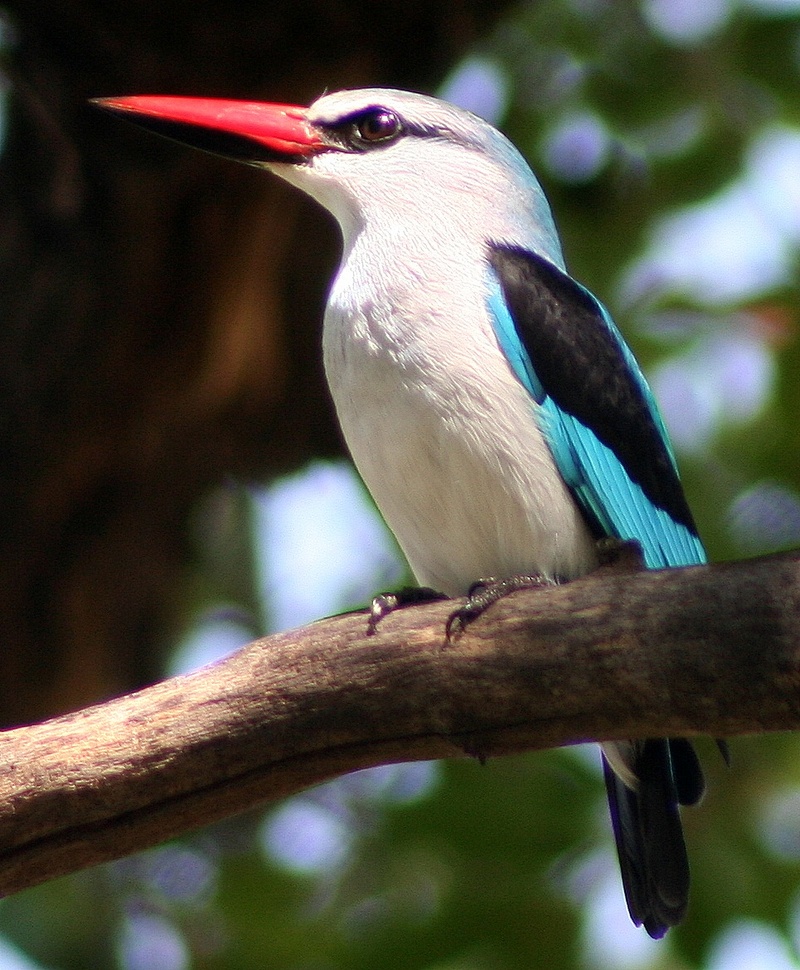|
| 질의: Black back | 결과: 272번째/1142 | |
Woodland Kingfisher (Halcyon senegalensis) - Wiki
| 제목: | Woodland Kingfisher (Halcyon senegalensis) - Wiki
| |

| 해상도: 965x1170
파일크기: 473512 Bytes
촬영일: 2005:11:22 09:26:37
사진기: Canon EOS DIGITAL REBEL XT (Canon)
F number: f/5.6
Exposure: 1/200 sec
Focal Length: 300/1
등록시간: 2007:08:19 23:50:49
|
Woodland Kingfisher
From Wikipedia, the free encyclopedia
[Photo] Woodland Kingfisher (Halcyon senegalensis) photographed in Botswana.
Date November 22, 2005. Author David Meeker http://commons.wikimedia.org/wiki/User:Dfmeeker
The Woodland Kingfisher (Halcyon senegalensis) is a tree kingfisher which is widely distributed in tropical Africa south of the Sahara and from Pretoria northwards . This kingfisher is essentially resident within 8° of the equator, but northern and southern populations are migratory, moving into the equatorial zone in the dry season.
This is a medium-sized kingfisher, 20-23 cm in length. The adult has a bright blue back, wing panel and tail. Its head, neck and underparts are white, and its shoulders are black. The flight of the Woodland Kingfisher is rapid and direct. The large bill has a red upper mandible and black lower mandible. The legs are bright red. Some birds may have greyish heads, causing confusion with Mangrove Kingfisher.
However, the lores are dark, creating a dark stripe through the eye (the stripe does not extend through the eye in Mangrove Kingfisher), and the underwing, primaries and secondaries are black with white underwing coverts (there is a black carpal patch on the white coverts in Manrgove Kingfisher). The inner webs of the base of the flight feathers are white, creating an indistinct white wingbar (white completely absent from wings in Mangrove Kingfisher). The breast is white (tends to be much greyer in Mangrove Kingfisher).
The sexes are similar, but juveniles are duller than adults and have a brown bill. The call of this noisy kingfisher is a loud trill.
Woodland Kingfisher is a common species of a variety of wooded habitats with some trees, especially Acacias, including around human habitation. Although it is a "kingfisher", it prefers drier habitats in more traditional woodland and can be far from water. It is often solitary but can occur in small groups. It hunts from an exposed perch, often on a dead branch of a tree, or perches quietly in semi-shade whilst seeking food. The prey is mainly a wide variety of large insects, but also arthropods, snakes, fish and frogs.
The Woodland Kingfisher is aggressively territorial, attacking intruders including humans.
The Woodland Kingfisher has a striking display in which the wings are spread to show the white linings. The nest is a tree hole excavated by a woodpecker or barbet. A single clutch of three round white eggs is typical.
http://en.wikipedia.org/wiki/Woodland_Kingfisher
| The text in this page is based on the copyrighted Wikipedia article shown in above URL. It is used under the GNU Free Documentation License. You may redistribute it, verbatim or modified, providing that you comply with the terms of the GFDL. |
|
^o^
동물그림창고 똑똑전화 누리집
^o^
|
|

